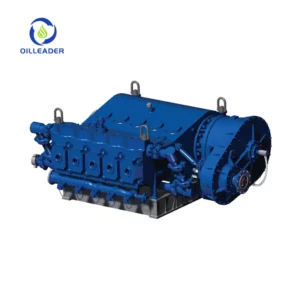Introduction
In drilling operations, the mud circulatory system plays a crucial role in maintaining the efficiency and safety of the process. This system ensures the proper handling and circulation of drilling mud, which is essential for lubricating the drill bit, stabilizing the wellbore, and carrying cuttings to the surface. Let’s delve into the components and functioning of this vital system.
Key Components of the Mud Circulatory System
- Mud Pump
- The mud pump is the heart of the circulatory system. It pumps drilling mud from the mud tanks through the standpipe and hose to the drill string, pushing the mud down the wellbore.
- Mud Mixing Hopper
- This device is used to mix new mud or additives into the drilling fluid system. It ensures that the mud has the right properties to meet the drilling requirements.
- Centrifugal Mixing Pump
- This pump aids in the mixing process, ensuring a consistent and homogenous mud mixture. It helps in transferring mud between different tanks and the mud house.
- Shale Shaker
- The shale shaker is a primary solids control device that removes large solids (cuttings) from the mud as it returns to the surface. It ensures that the drilling mud is free from large particles that could impede the drilling process.
- Chemical Tanks
- These tanks store the chemicals and additives used to condition the drilling mud. Proper chemical treatment is crucial for maintaining the mud’s properties.
- Suction Tank
- The suction tank is where the mud is stored before being pumped by the mud pump. It serves as a reservoir to ensure a steady supply of mud to the pump.
The Mud Circulation Process
- Pumping Mud into the Well
- The mud pump sends drilling mud from the suction tank through the standpipe and hose into the drill string. The mud travels down the drill string, lubricating and cooling the drill bit.
- Returning Mud
- The mud flows back up the wellbore, carrying with it the drilled cuttings. As it returns, it stabilizes the wellbore walls and prevents formation fluids from entering the well.
- Solids Removal
- The returning mud passes through the shale shaker, where large cuttings are removed. The cleaned mud then flows into the sand trap and other solids control equipment for further cleaning.
- Reconditioning and Recirculation
- The cleaned mud is then reconditioned by adding chemicals and mixed in the mud mixing hopper. The reconditioned mud is stored in the bulk mud bins and is ready for recirculation.
Visual Representation

Conclusion
The mud circulatory system is a vital component of any drilling operation. Understanding its components and their functions helps in optimizing the drilling process, ensuring safety, and improving efficiency. Proper maintenance and monitoring of this system are essential for successful drilling operations.







